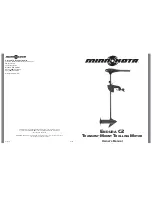Demonstration Board for Freescale MCF5211, Rev. 1
Memory Map
Freescale Semiconductor
6
Connect the USB cable to an open USB port on the host PC and attach to the USB port on the target board.
LED's 1–4 located adjacent to the DB-9 connector, and the VDD LED will light and the loaded application
will begin to execute.
4.2
DEBUG Mode
DEBUG mode supports application development and debug using the ColdFire background debug mode
(BDM). Background mode is accessible using either the integrated USB-BDM or an external ColdFire
BDM cable. Use of the integrated BDM requires a host PC with an available USB port and an A/B USB
cable and appropriate hosting software. The USB cable used must be USB 2.0 compliant. A 26-pin
BDM_PORT header supports the use of an external BDM cable. This header is not installed in default
configurations. The steps describe using the integrated USB-BDM. See
on configuring the board for alternate power input.
1. Connect a serial cable between the board and a host PC if needed.
2. Connect auxiliary equipment to board if needed.
3. Install and launch CodeWarrior
™
6.1 Special Edition, or other software capable of communicating
with the ColdFire MCU.
4. Configure the board option jumpers as shown in
.
Connect the supplied USB cable between an available USB port on the host PC and the USB connector on
the board.
Hosting development software will establish background communication.
5
Memory Map
Refer to the MCF5213 Integrated Microcontroller Reference Manual for details.
Table 2. Run Mode Setup
PWR_SEL
Set to VB
BDM_EN
OFF
COM_EN
ALL ON (if required)
VX_EN
ON (if required)
Table 3. Debug Mode Setup
PWR_SEL
Set to VB
BDM_EN
ON
COM_EN
ALL ON (if required)
VX_EN
ON (if required)

















